Japanese street foods offer a simple and cost-effective way to sample local dishes while traveling in Japan. Kyoto City, Japan is home to some fantastic shops specializing in Japanese street food, bringing tourists and locals a wonderful selection of tantalizing treats.
But with so many places to visit and explore in Kyoto, it can be difficult to decide on where to visit to find delicious Japanese street food. Leave it to us, the MACHIYA INNS & HOTELS local staff, to share with you our top picks for where to visit if you’re in search of local Kyoto cuisine, and what to try when you’re there!
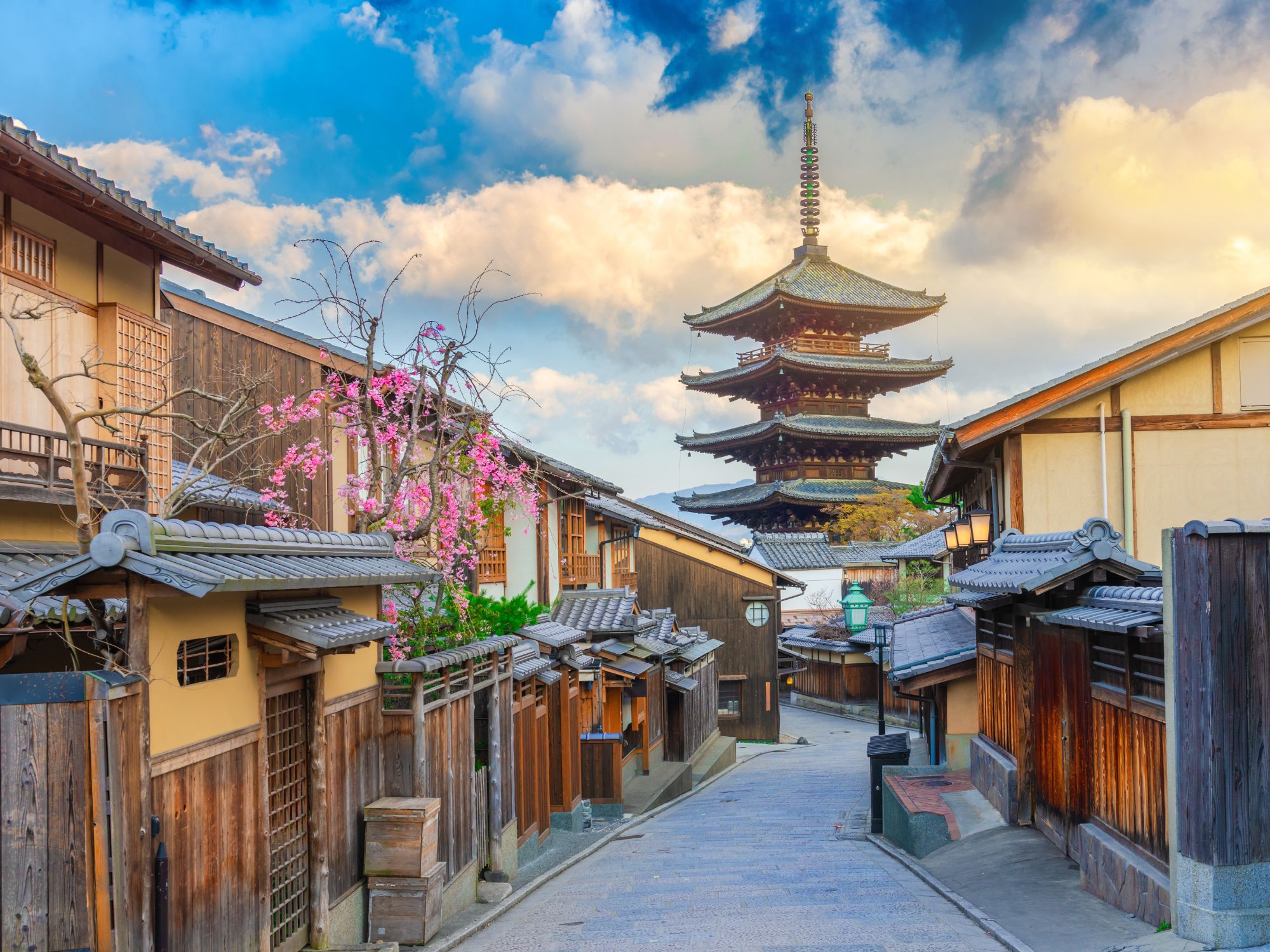
You can find delicious Japanese street food throughout Kyoto City, but we’ve narrowed it down to our top picks that you can visit while also sightseeing. Our top picks are Nishiki Market, the area around Kiyomizu Temple, the Fushimi Inari area, and Arashiyama. While enjoying the Japanese food here, be sure to not eat and walk at the same time! Although they are called street foods, it is considered impolite in Japan to eat and walk at the same time. Many places offer an area for visitors to eat their purchases, so be sure to take advantage of them. You can also take many of the foods recommended in this blog to-go, to enjoy at your leisure in your accommodation.
While exploring Kyoto city and finding the best Japanese street foods, be sure to look out for seasonal specialties! Many businesses will offer special flavors or limited edition ingredients, according to what is in season in Japan. Called shun (旬) in Japanese, fresh seasonal ingredients have been valued throughout history in Japanese cuisine. In the spring, you can find many cherry blossom, or sakura, flavored street foods. The summer offers watermelon, peach, and even unagi (eel). Fall in Japan brings sweet potatoes, chestnuts, various mushrooms, pumpkins, and more. Winter in Japan sees many fresh seafood options, strawberries, mikan, and more.
See our recommended accommodations in Kyoto: MACHIYA RESIDENCE INN KYOTO
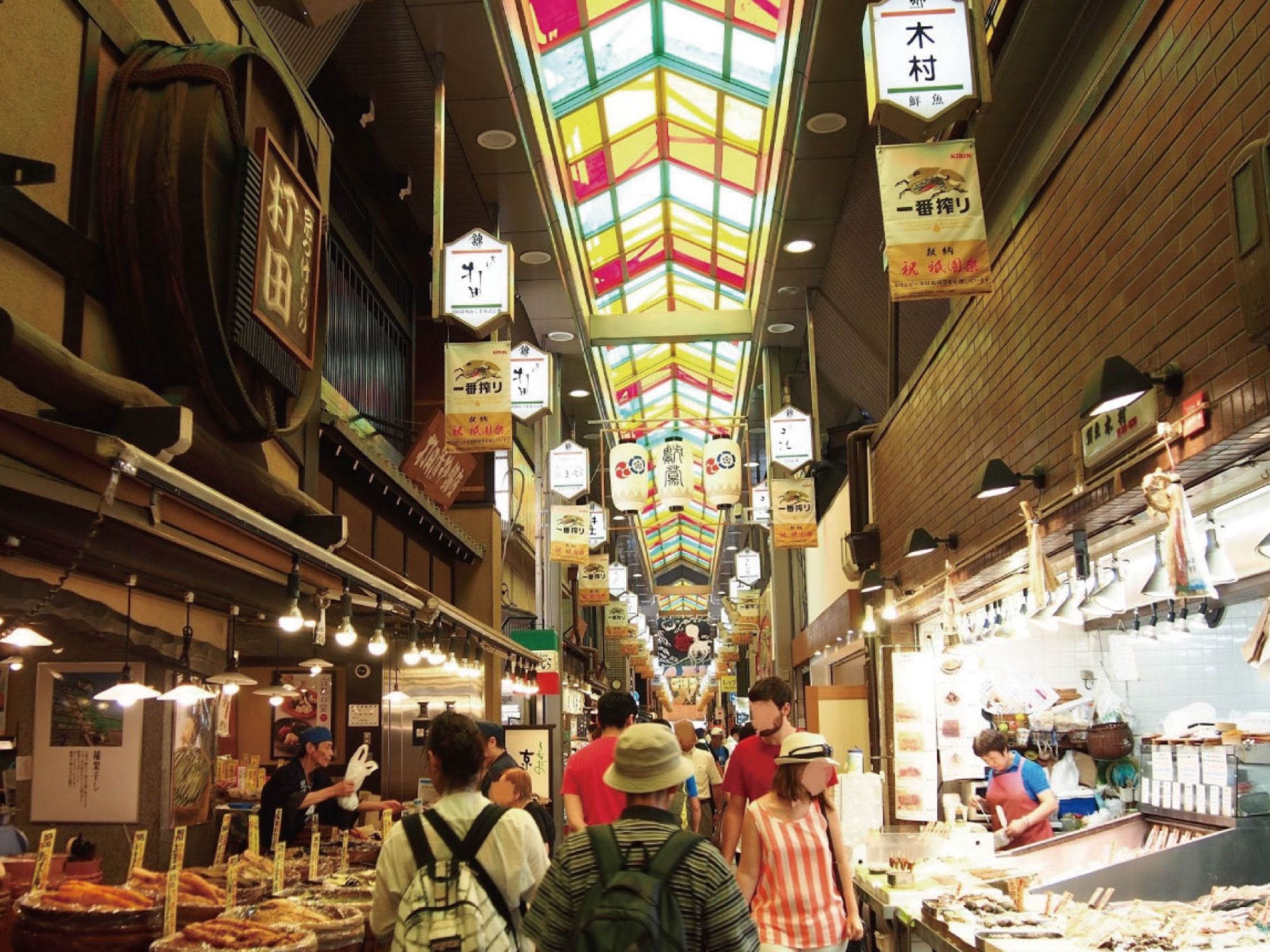
Nishiki Market, also known as Kyoto’s Kitchen, has a well-deserved top spot on our list. This incredible place dates back hundreds of years: the first store opened around 1310, and many of the current shops have belonged to the same families for generations.
Wander through Nishiki Market and you’ll see an incredible variety of stores selling vegetables, fruits, and other local Kyoto food. Looking for kitchenware, knives, tea, and other non-food goods? You’ll find them here as well!
But alongside all this, Nishiki Market has many restaurants and food stalls selling tantalizing Japanese street food. Shops offer everything from sushi to beef, from fun Japanese treats to fresh seafood.
When visiting Nishiki Market, we have 2 go-to foods that we recommend. These are popular with both locals and Japanese tourists, but are definitely a must for all visitors.
The first dish we recommend trying is Tako Tamago. Translating to ‘Octopus Egg’ this is one of the most popular street foods in Nishiki Market, and definitely stands out from the other local cuisine that is on display. Tako Tamago is a skewered baby octopus with a quail egg inside, well seasoned with soy sauce, making it a little salty yet sweet at the same time.
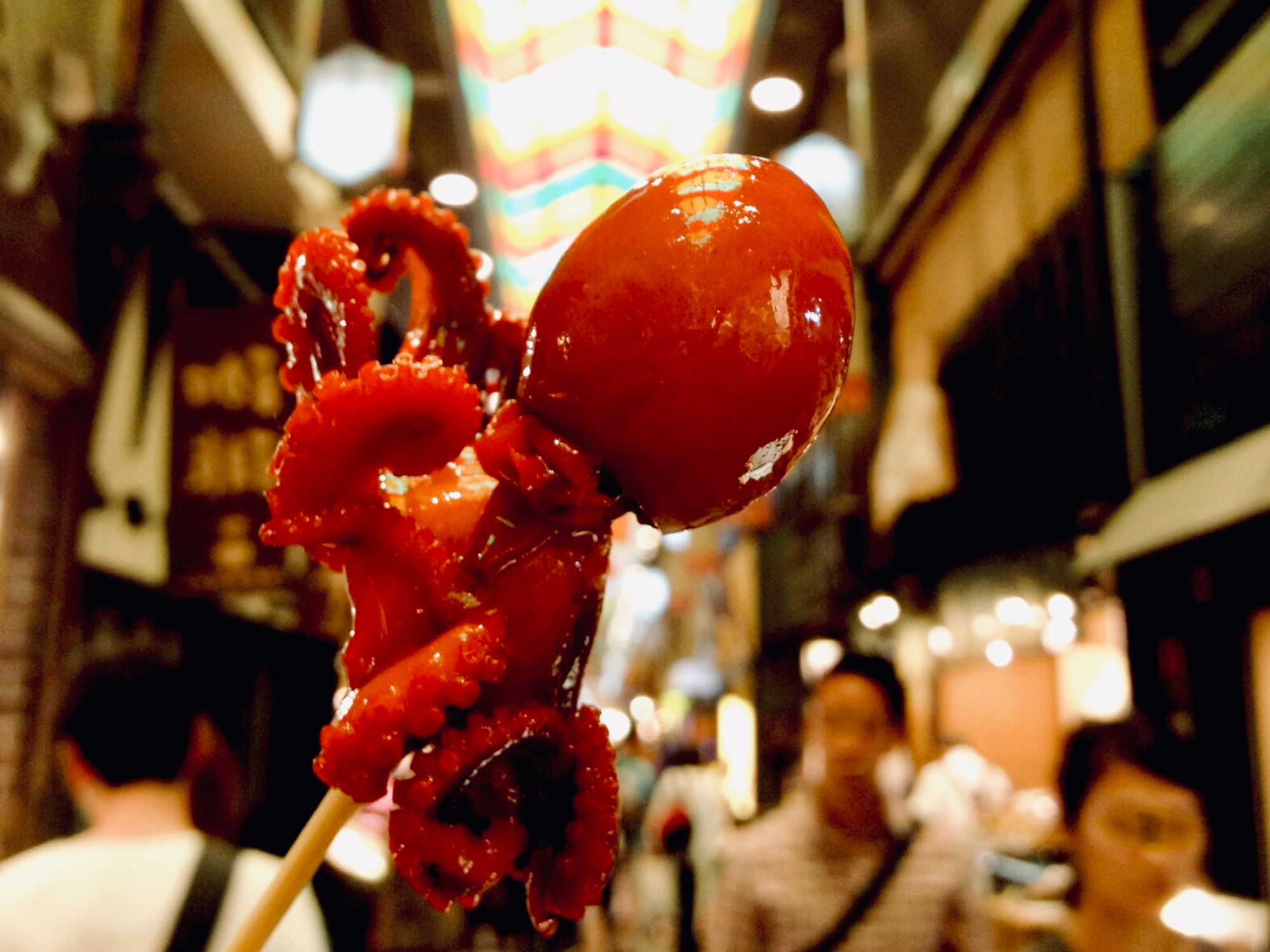
Another favorite is the Dashimaki Tamago, or rolled Japanese egg omelet made with dashi. This dish may look simple, but it definitely packs a powerful punch, and contains no artificial ingredients. The Dashimaki Tamago is even popular with Kyoto locals, and is often bought as a side dish to accompany a meal. If you want to add even more umami flavor, try the Umaki, a rolled omelet with broiled eel inside!
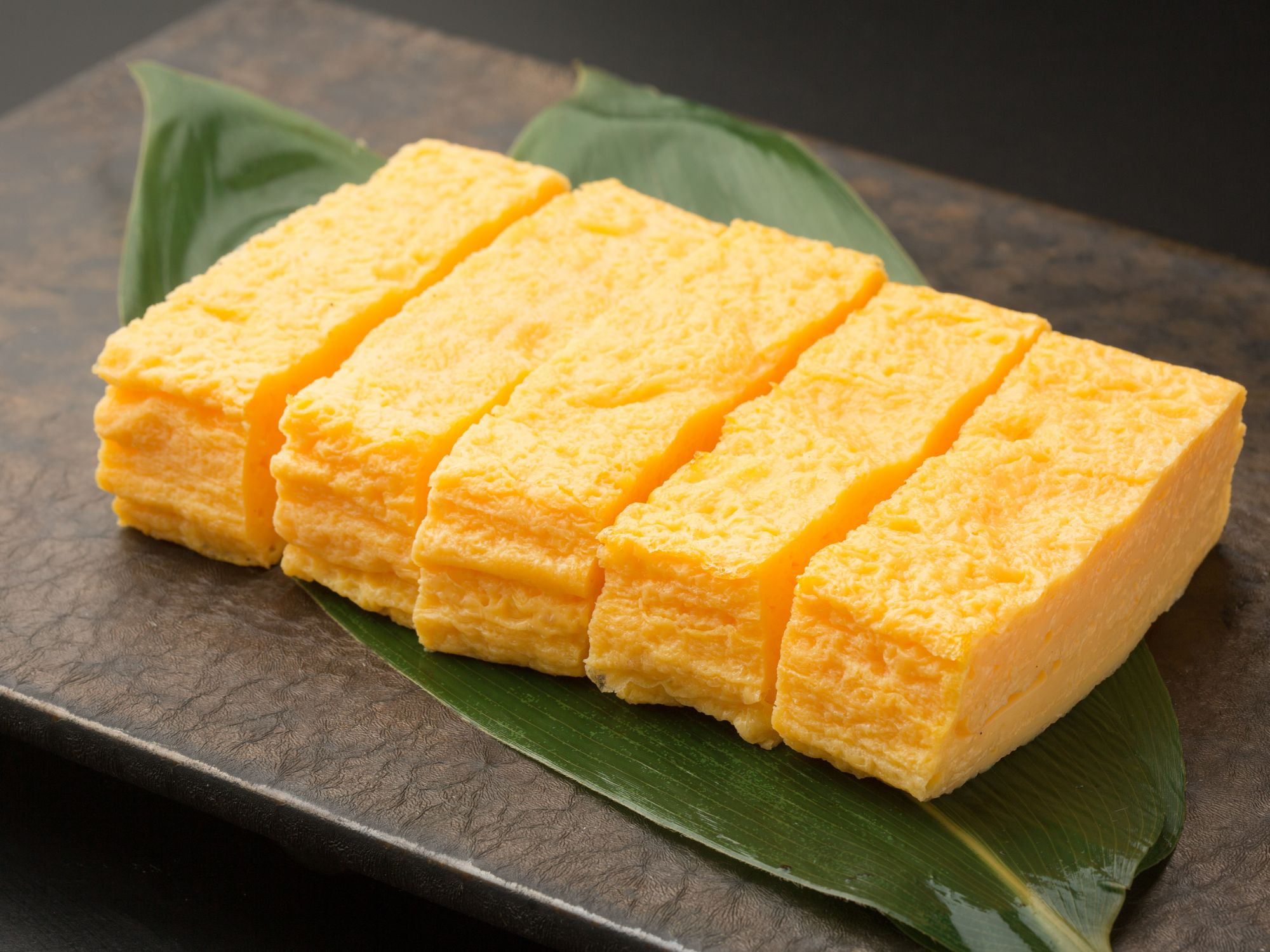
From Kyoto Station, we recommend taking the Karasuma Subway Line to Shijo Station. The western entrance to Nishiki Market is just a five-minute walk from there. If you have the Kyoto Bus Pass and want to make the most of it, you can also take one of several buses that pass through the Shijo area from Kyoto Station.
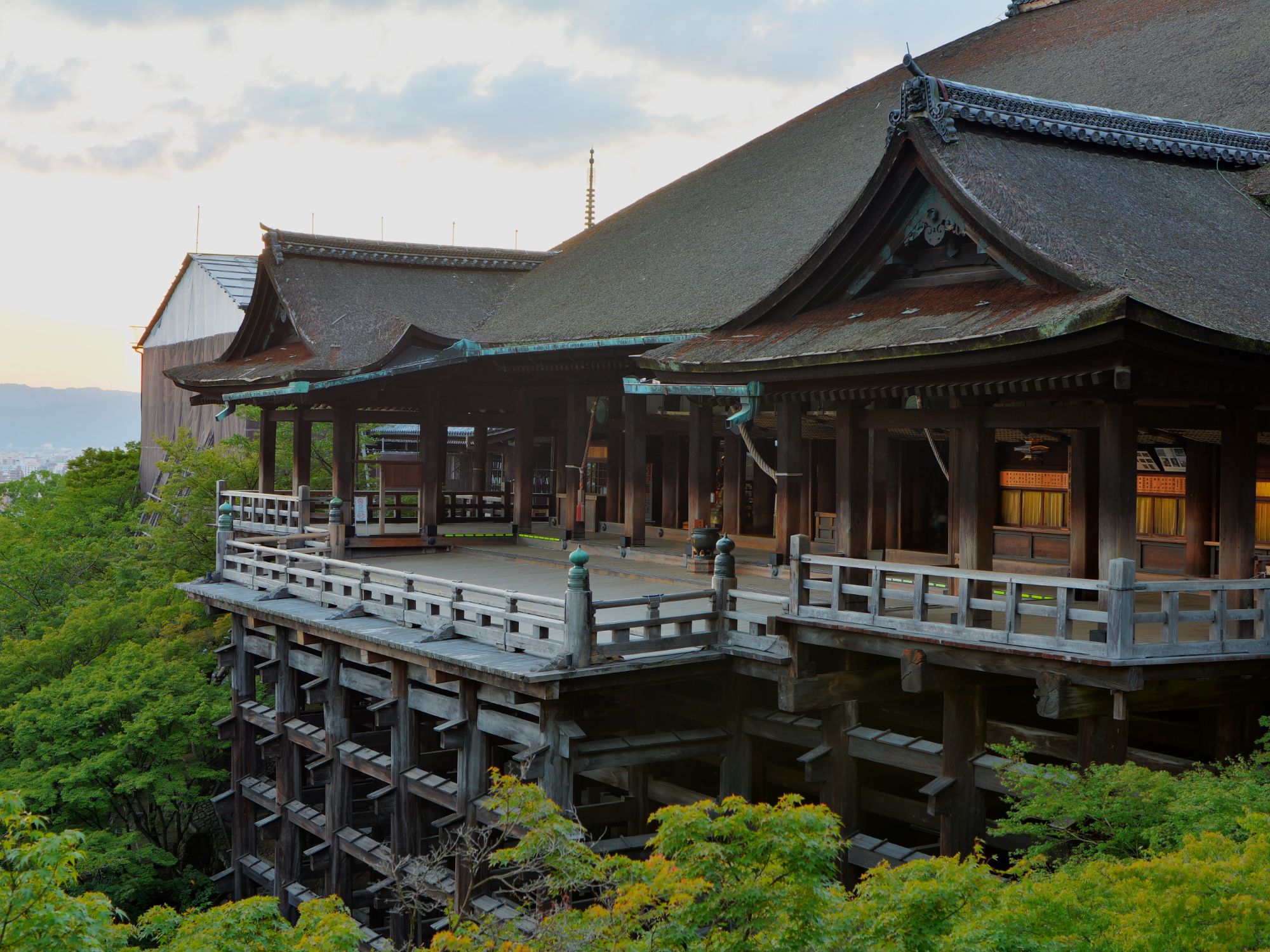
Kiyomizu Temple, or Kiyomizudera, is one of the most beloved temples in all of Japan. Established in 780, the temple is most famous for the grand wooden terrace and the beautiful views all throughout the year, but especially during the cherry blossom and fall seasons. The surrounding area boasts beautifully traditional Japanese architecture, so it’s a must-see if you want to feel as if you’ve gone back in time to ancient Japan.
The walk up to the temple is lined with restaurants, cafes, and shops. It’s a terrific spot to enjoy a light snack or meal before or after you visit the temple while browning souvenirs.
If you’re a fan of Japanese festival foods, you’ll enjoy ichigo ame. Ichigo ame are candied strawberries on a stick, often seen at Japanese festivals. These Japanese sweets have become very popular in Japan in recent years, and you can see many Japanese tourists eating ichigo ame while visiting the Kiyomizudera Temple area.
When exploring the streets, you may come across the scent of delicious soy sauce. This is probably one of the many senbei, or Japanese rice cracker, shops here! You can find freshly made senbei in a variety of different flavors, from salty to sweet, and even spicy! Be sure to pick up a few to enjoy later.
The Kiyomizudera area is also known for the wealth of matcha (powdered green tea) options, from drinks to sweets. If you’re looking for more modern desserts, you can find anything from matcha cream puffs to cakes and waffles in the cafes here. For travelers wanting to try traditional Japanese foods and sweets, many cafes offer relaxing matcha drinks as well as matcha-flavored dango.
If you’re looking for a snack as well as a souvenir of Kyoto, look no further than the yatsuhashi. The yatsuhashi is the go-to Kyoto souvenir, as well as one of the most famous regional products from Kyoto. Baked yatsuhashi has a hard texture, and are similar to senbei. Nama-yatsuhashi (or steamed yatsuhashi), however, is soft, usually wrapped around a sweet filling like anko (red bean paste). Often, you can find special seasonal flavors of yatsuhashi, like cherry blossom during spring and sweet potato in the fall.
From Kyoto Station, take the 100 or 206 bus to the Gojo-zaka bus stop (a 15 to 20 minute ride). Kiyomizu Temple is around a 10 to 15 minute walk from here. Be sure to wear comfortable shoes for the walk, as it is uphill from the bus stop!
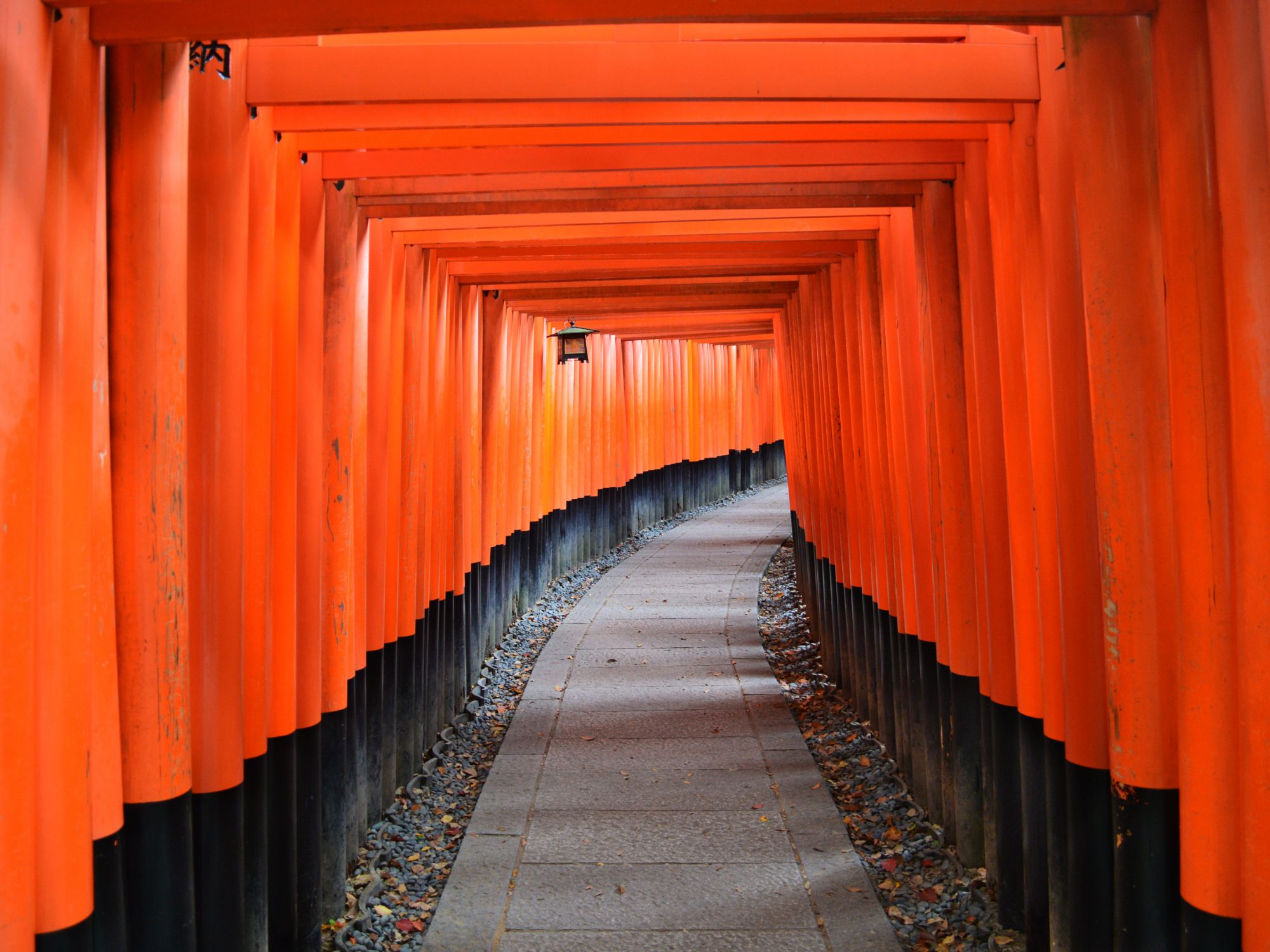
The Fushimi Inari Shrine is dedicated to Inari, the deity of rice cultivation and prosperity. It’s believed to have been founded in 711, and the vibrant orange-red torii gates are one of the most memorable sights in Kyoto — if not all of Japan!
You can choose to visit the shrine buildings and torii gates at the base of Mt. Inari, but most visitors explore the various mountain trails for a grander sightseeing experience. The trip should take you around two or three hours if you plan on seeing everything there is around the mountain.
More than 10,000 torii gates stand along the path leading up Mt. Inari. Be sure to watch out for the many statues of foxes, which are believed to be the divine messengers of Inari.
When visiting Fushimi Inari, trying Inari sushi are a must! Inari sushi, or Inari zushi, is a simple, rather inexpensive type of sushi. Sushi rice is carefully wrapped in small bags made of deep-fried tofu called aburaage. Aburaage is said to be a fox’s favorite food, and since foxes are believed to be the messengers of Inari, Japanese cusine using aburaage like inari sushi became a specialty of the Fushimi Inari area.
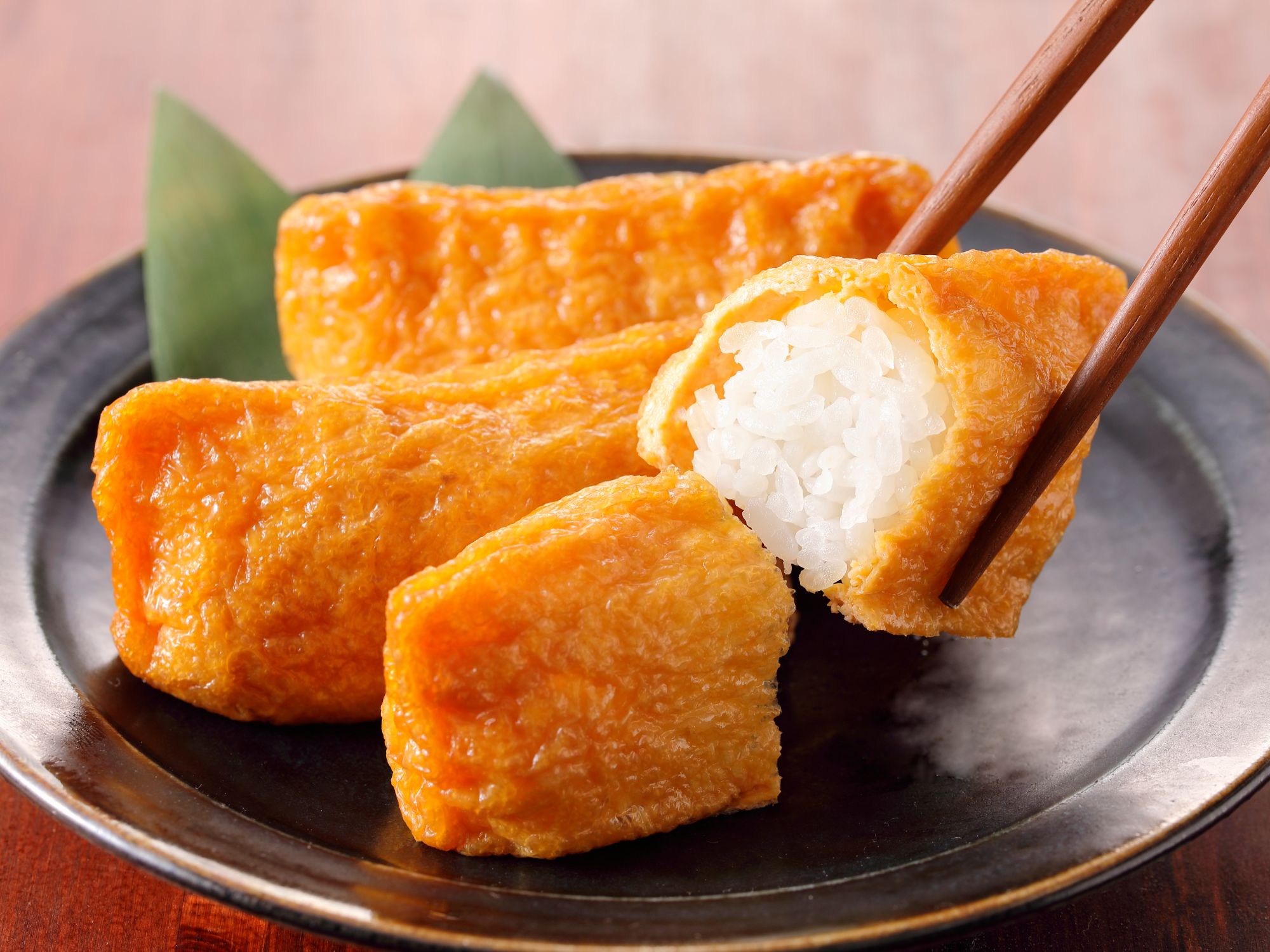
Although fortune cookies might sound like a strange thing to be on a list of Japanese street foods, this is a little piece of Japanese history that you can eat. The fortune cookies here in the Fushimi Inari area, called Tsujiura Senbei, are said to be the original fortune cookies. Enjoy a snack, while also getting your fortune!
You may have seen our last recommendation in the Fushimi Inari Shrine area before on SNS. Resembling a transparent balloon or a drop of water, the mizu-maru mochi has been a hit on social media. Also referred to as raindrop cakes, top your own raindrop with some kuromitsu (Japanese sugar syrup) and some kinako (roasted soybean powder) for a unique experience.
From Kyoto Station, take the JR Nara Line to Inari Station:the trip is only two stops and lasts approximately five minutes. The entrance to Fushimi Inari is directly in front of you as you exit the train. The train station can get crowded, so if you’re also planning on taking the train back, we recommend purchasing a return train ticket before heading to the shrine.
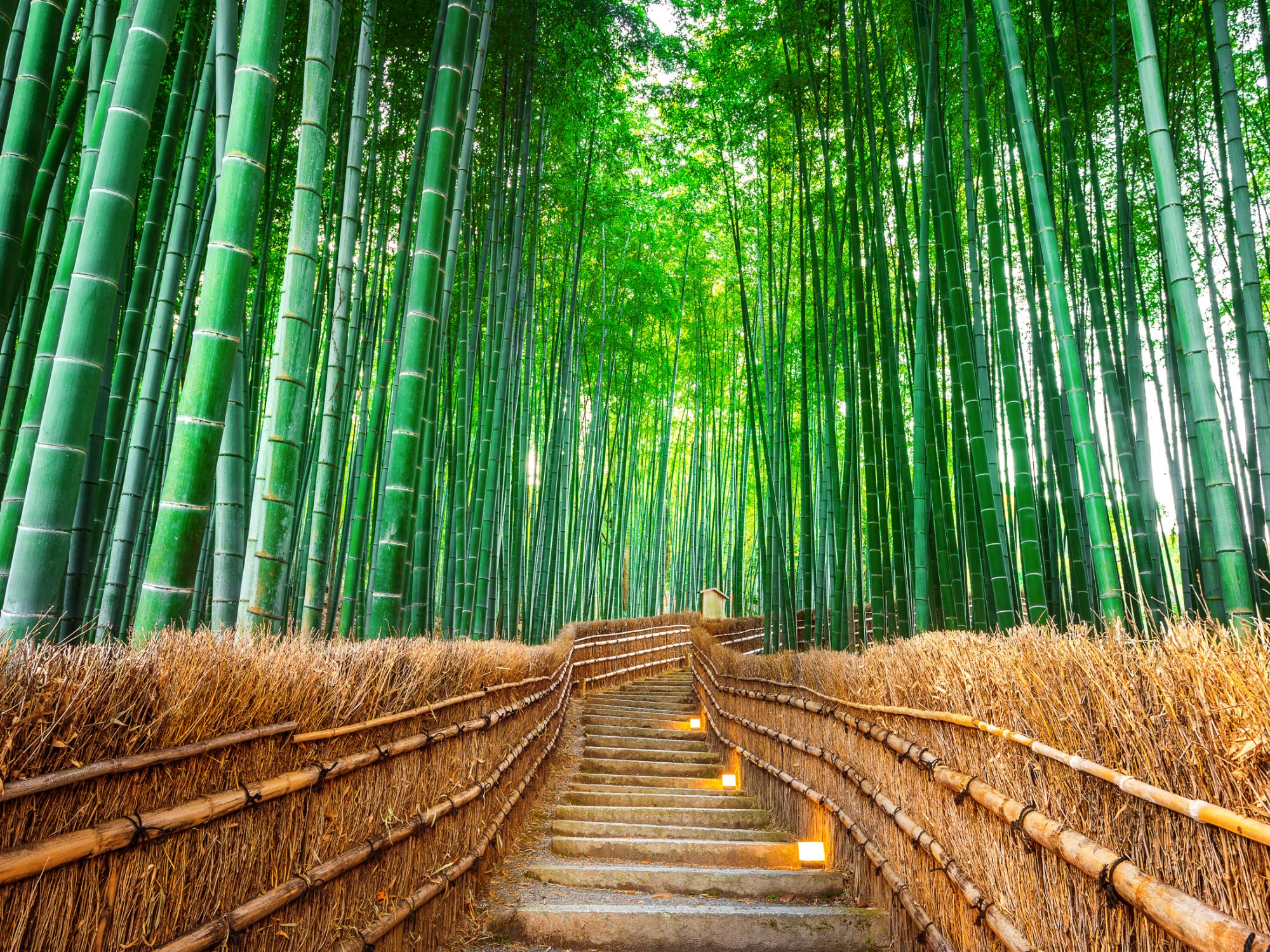
Arashiyama, in northern Kyoto, is a popular area for tourists. The beautiful bamboo forests are the most famous sights to see, but there are other amazing places to discover here. There are a number of beautiful temples and shrines, as well as the ever-popular Arashiyama Monkey Park! (Be sure to wear walking shoes for the hike up to see the monkeys!)
But no trip to Arashiyama would be complete without stopping by the Togetsukyō Bridge — expect spectacular views no matter the season you visit!
When visiting the Arashiyama area, there are many options to choose from. But if you’re looking for a savory treat that won’t fill you up too much, korroke are the perfect go-to street food. Korroke, or Japanese croquettes, are a long-time favorite of Kyoto locals. The combination of potatoes and meat with a crispy panko breading exterior will have your mouth watering from just the smell!
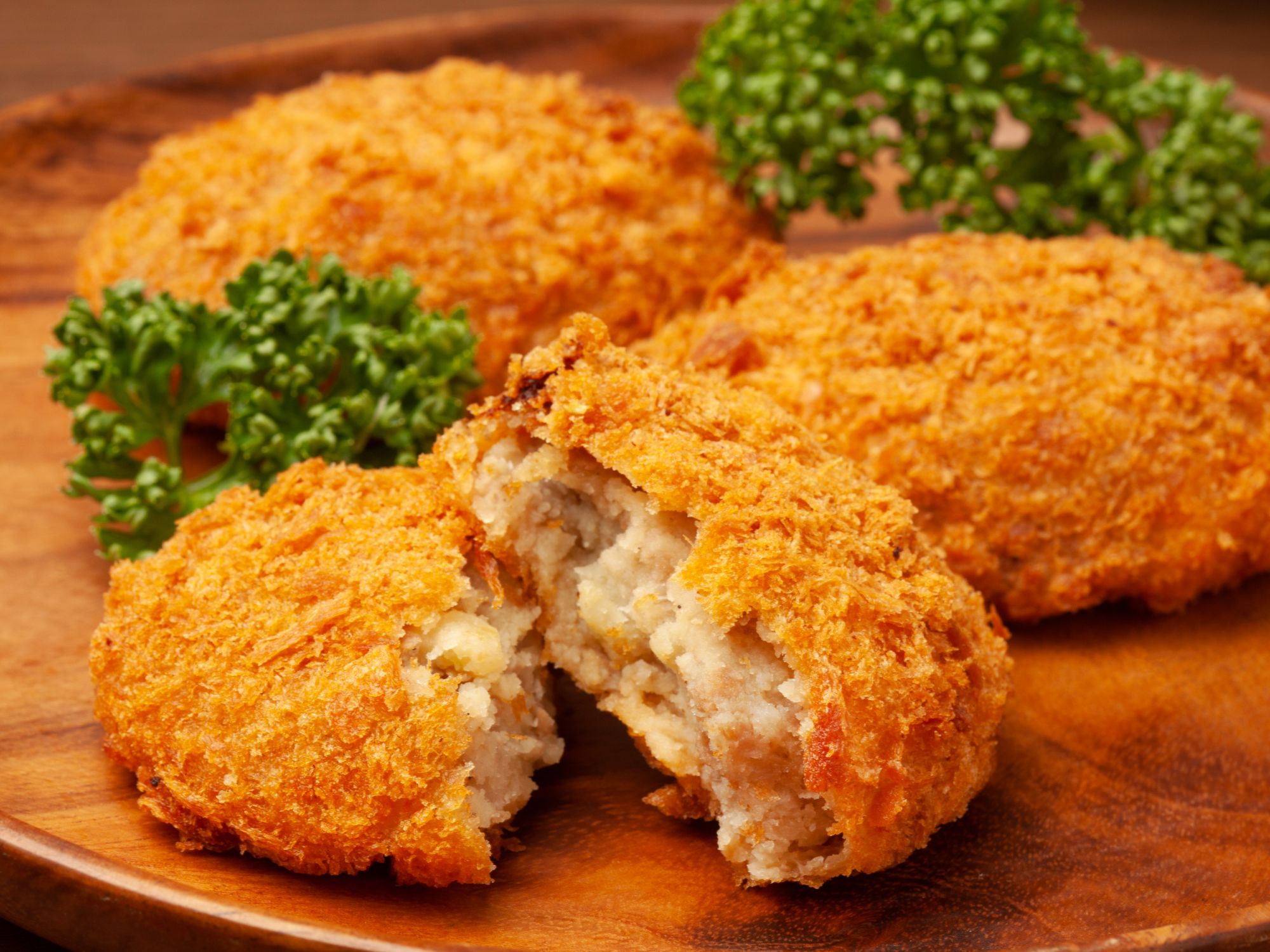
If you’re looking for a traditional Japanese snack, then sweet Japanese rice dumplings, or dango, is our go-to pick. Shaped into balls and usually served on a skewer, dango can come in a variety of flavors. Our favorite is the mitarashi dango, which is actually more savory than sweet, served with a soy-based syrup. If you’re also looking for a Japanese street food that is delicious and instagrammable, the Arashiyama area is famous for beautifully decorated dango that look almost too good to eat!
Another of our top picks in Arashiyama are taiyaki. These fish shaped cakes, modeled after tai fish (red sea bream), are a common Japanese snack. They can come in a variety of flavors, with fillings like custard cream and anko (Japanese sweet bean paste) inside a cake made with batter similar to pancakes and waffles. The taiyaki in Arashiyama are recognizable by the cute, round shape, and their signature flavor is anko topped with a generous dollop of butter.
From Kyoto Station, take the JR San-in Line to Saga-Arashiyama Station. This journey should take approximately 20 minutes.
We hope our pick of the best Kyoto Japanese cuisine and street foods have whetted your appetite and inspired you for your travels in Kyoto!